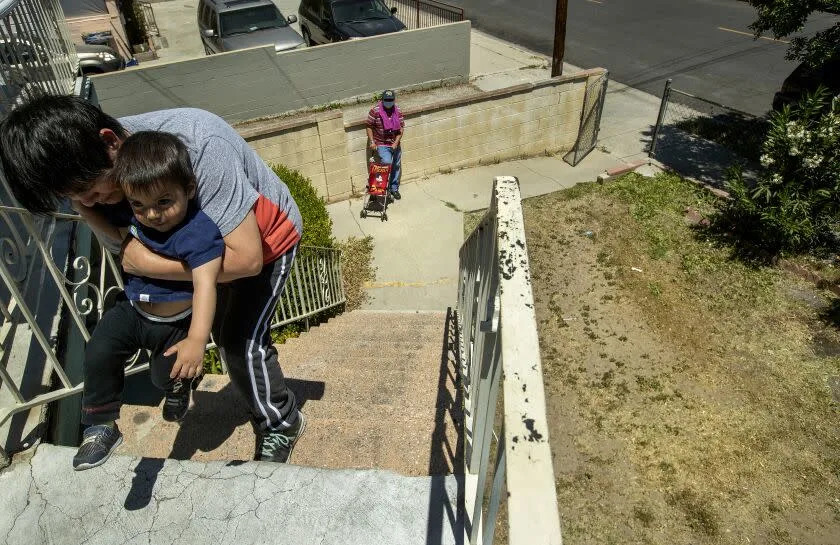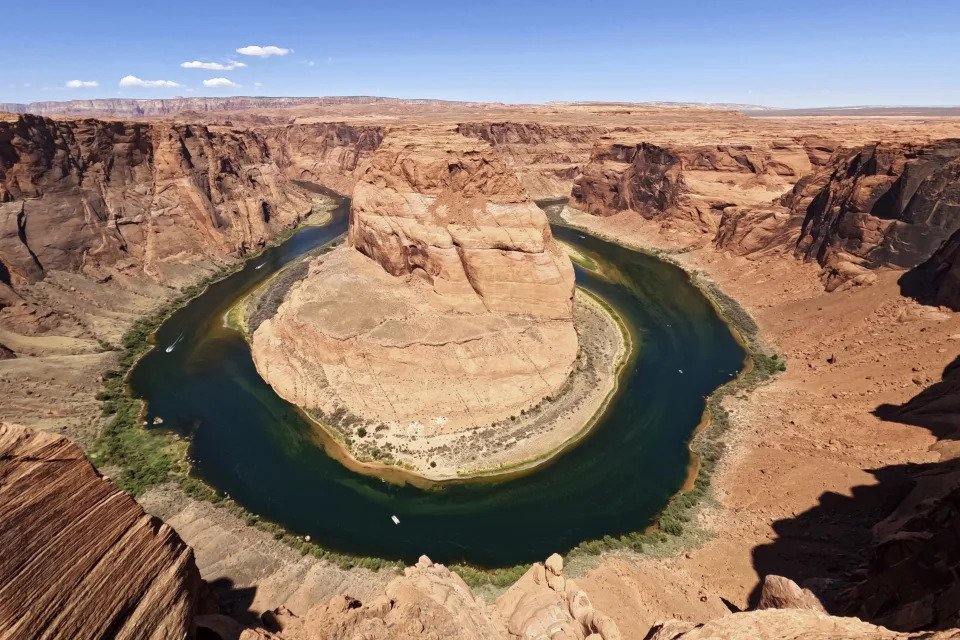Insider
The army Putin spent 2 decades building has been largely destroyed in Ukraine, and Russia’s ‘strategic defeat’ could threaten his regime
John Haltiwanger – September 14, 2022

- Russia’s military will have to be rebuilt as a result of the war in Ukraine, experts say.
- The war has “dramatically” altered perceptions of Russia’s military strength, one expert told Insider.
- Putin’s regime could also now be in jeopardy, as it faces rare examples of dissent.
Over the roughly two decades that Russian President Vladimir Putin has been in power, he’s dedicated a lot of time and money to building up and modernizing Russia’s military. In the process, Putin garnered a reputation as a force to be reckoned with and was widely viewed as one of the most powerful leaders in the world.
But the war in Ukraine has decimated the Russian military that Putin spent years building, while raising questions about his grip on power, Russia experts and military analysts told Insider.
“Russia’s invasion of Ukraine has been a strategic defeat. So far the Kremlin has not been able to achieve its strategic level objectives and it has incurred significant costs. Russia’s military is going to have to be rebuilt,” George Barros, a military analyst with the Institute for the Study of War (ISW), told Insider.
“The conventional ground army ground force that the Kremlin has spent the last two decades on creating — seeking to create a modern military — that force has been just largely degraded and in a large part destroyed in the past six months of war in Ukraine,” Barros added. “It’s very true to say that the conventional Russian ground force has taken a significant beating in Ukraine. It will have to be rebuilt.”
Though it’s difficult to confirm death tolls with the fighting ongoing, US military estimates last month put Russian casualties as high as 80,000. Among the dead have been senior officers, including generals.
Barros said that it will likely take “a generation to recreate” the Russian officer corps, which is “definitely going to have a long-term strategic impact on the net assessment for Russia’s conventional military.”
And though Putin has so far avoided declaring a general mobilization to make up for significant troop losses in Ukraine, the Russian leader in August ordered the military to increase its ranks by 137,000 starting in 2023, an ambitious goal seen by some as unachievable and one of many signs that the Russian military is being hollowed out by the war in Ukraine.
A recent intelligence update from the British defense ministry said that the elite 1st Guards Tank Army and other Western Military District units have suffered heavy casualties, indicating that “Russia’s conventional force designed to counter NATO is severely weakened.” The ministry added that “it will likely take years for Russia to rebuild this capability.”
The Russian military has also seen the damage, destruction, and abandonment of astonishing amounts of equipment in Ukraine. It is estimated to have lost thousands of armored vehicles since the war began in late February. These losses have forced the Russian military to resort to pulling obsolete, Soviet-era equipment, such as T-62 tanks, out of storage.

‘Not nearly as powerful as we thought’
Russia’s military has generally been ranked as the second most powerful in the world — surpassed only by the US.
But Russia’s disastrous performance in the Ukraine war is “going to change the assessment of Russia’s military strength dramatically,” Robert Orttung, a professor of international affairs at George Washington University whose research focuses on Russia and Ukraine, told Insider.
The Russian military is “not nearly as powerful as we thought it was,” he said.
A few years ago, Russia appeared to be winning the war in Syria and “Russian strategy seemed to be outsmarting Western strategy in the Middle East,” Orttung said, and it provided a major boost to Moscow’s propaganda about its military strength.
“A lot of their ability to make their propaganda effective was based on their actual battlefield prowess, which seemed to be quite strong in place like Syria,” Orttung said. “Now, basically unable to achieve their goals, unable to show that there’s integration between the guys fighting on the ground, the air force, and the other units — it’s definitely going to knock them down. The fact that they haven’t been winning in the field is going to make their propaganda much less effective.”
Before the invasion began, Russia was expected to conquer Kyiv in a matter of days. But Ukrainian forces, with the help of Western-supplied military equipment, put up a far stiffer resistance than Moscow anticipated. Russia’s forces failed to take the Ukrainian capital and instead turned their attention to the eastern Donbas region. Though a war had raged in that region between Kremlin-backed rebels and Ukrainian forces since 2014 — the same year that Russia invaded Ukraine and annexed Crimea — Russia only made gradual progress in its campaign to take over the Donbas.
Ukraine launched a counteroffensive in recent days, pushing the Russian forces into retreat and retaking an astonishing amount of territory in the country’s south and east. The Ukrainian government said its forces have recaptured around 3,000 square miles in September so far.

‘Wouldn’t write off Putin now’
Between devastating troop losses and Russia’s forces now being on the run, Putin is in an increasingly precarious position.
“Strength is the only source of Putin’s legitimacy,” Abbas Gallyamov, a former speechwriter for Putin, told the New York Times. “And in a situation in which it turns out that he has no strength, his legitimacy will start dropping toward zero.” Gallyamov told the Times that if Ukrainian forces “continue to destroy the Russian army as actively as they are now,” then it could “accelerate” calls from elites for Putin’s successor to be chosen.
Some Russia watchers now believe Putin’s regime is in jeopardy. Michael McFaul, a former US ambassador to Russia, on Wednesday tweeted, “Putin overreached in Ukraine. It’s the beginning of the end for Putinism in Russia.”
Local Russian lawmakers are calling for Putin to be removed from power over Ukraine, taking the potentially fatal risk of openly criticizing a leader with a reputation for ruthlessly squashing dissent. Even the Kremlin’s propagandists on Russian state media are struggling to continue offering positive assessments of how the war is going.
“You’re starting to see rumblings — both on TV and at the local grassroots level — of discontent with his leadership and a realization that the war is not going in Russia’s favor,” Orttung said. Taken together, Orttung said these developments “raise question marks about [Putin’s] image among the people and his ability to exert that image of competence.”
Despite such challenges, and the damage done to perceptions of Russia’s strength, Orttung is not convinced that this is the end for Putin.
“I wouldn’t write off Putin now,” he said. “A lot of people, including me, have been predicting he’s going to leave power or his demise is imminent. But he does have a lot of strengths — the main strength being that he’s eliminated any possible, reputable alternative to him.”
“It’s not clear who would replace him and all the people around him — they depend on him being in power for their own power. They have a stake in him staying there. And he survived more than 22 years fighting in a quite difficult environment, which is the Russian political scene,” Orttung added, underscoring that “most of the elites think that they’re probably better off with Putin there.”



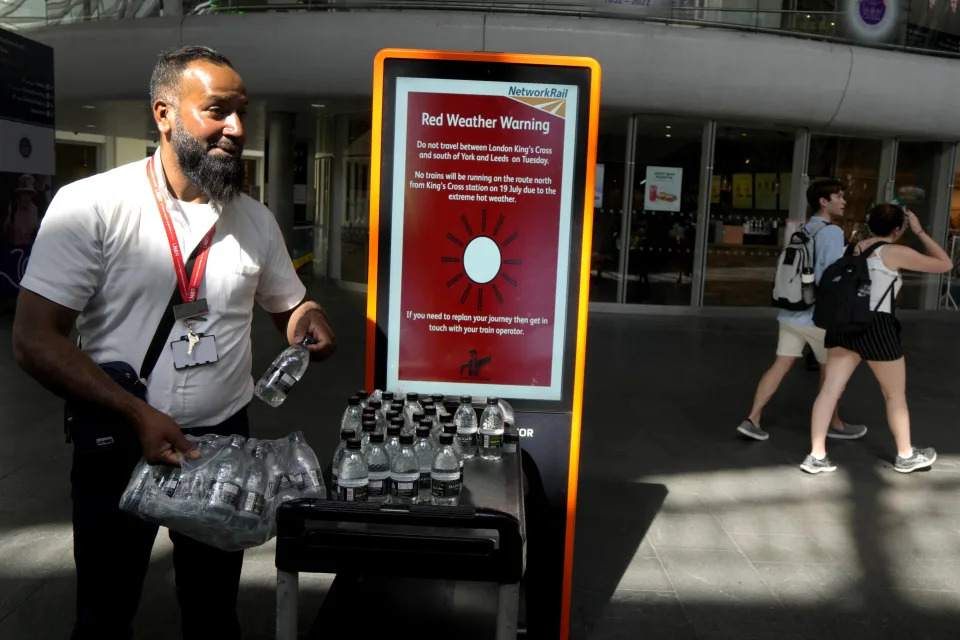

 Farmer Larry Cox walks in a field of Bermudagrass with his dog, Brodie, at his farm Monday, Aug. 15, 2022, near Brawley, Calif. The Cox family has been farming in California’s Imperial Valley for generations. (AP Photo/Gregory Bull)
Farmer Larry Cox walks in a field of Bermudagrass with his dog, Brodie, at his farm Monday, Aug. 15, 2022, near Brawley, Calif. The Cox family has been farming in California’s Imperial Valley for generations. (AP Photo/Gregory Bull) Water flows along the All-American Canal Saturday, Aug. 13, 2022, near Winterhaven, Calif. The canal conveys water from the Colorado River into the Imperial Valley. (AP Photo/Gregory Bull)
Water flows along the All-American Canal Saturday, Aug. 13, 2022, near Winterhaven, Calif. The canal conveys water from the Colorado River into the Imperial Valley. (AP Photo/Gregory Bull)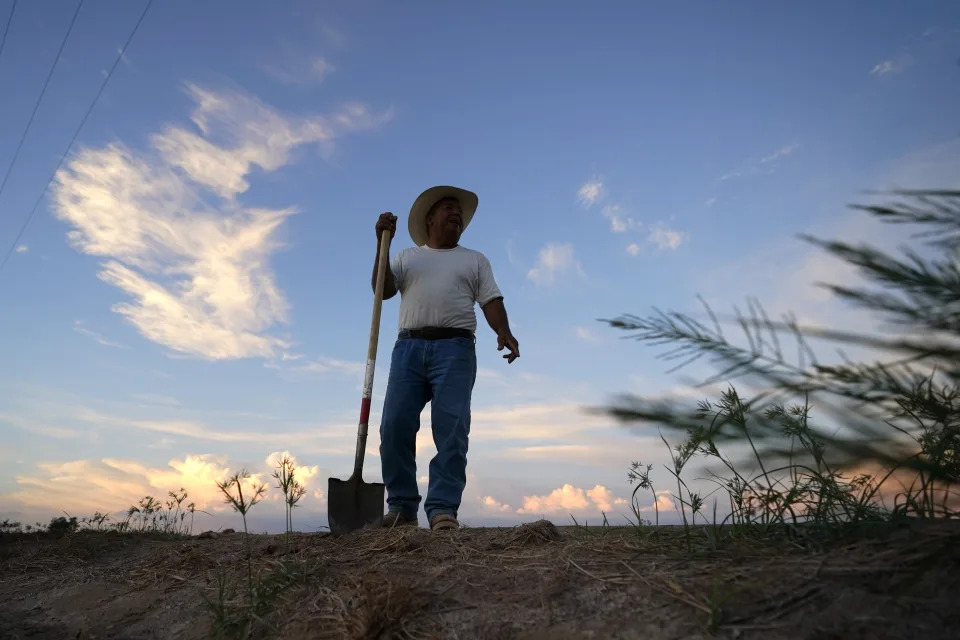 Irrigator Raul Quirarte, 56, pauses during work to prepare a field to receive water from the All-American Canal, Sunday, Aug. 14, 2022, near Brawley, Calif. Quirarte started as an irrigator at the age of 18, taught by his father, who also was an irrigator. (AP Photo/Gregory Bull)
Irrigator Raul Quirarte, 56, pauses during work to prepare a field to receive water from the All-American Canal, Sunday, Aug. 14, 2022, near Brawley, Calif. Quirarte started as an irrigator at the age of 18, taught by his father, who also was an irrigator. (AP Photo/Gregory Bull) Water flows along the All-American Canal Saturday, Aug. 13, 2022, near Winterhaven, Calif. The canal conveys water from the Colorado River into the Imperial Valley. (AP Photo/Gregory Bull)
Water flows along the All-American Canal Saturday, Aug. 13, 2022, near Winterhaven, Calif. The canal conveys water from the Colorado River into the Imperial Valley. (AP Photo/Gregory Bull) Farmer Larry Cox watches a tractor at work on a field at his farm Monday, Aug. 15, 2022, near Brawley, Calif. The Cox family has been farming in California’s Imperial Valley for generations. (AP Photo/Gregory Bull)
Farmer Larry Cox watches a tractor at work on a field at his farm Monday, Aug. 15, 2022, near Brawley, Calif. The Cox family has been farming in California’s Imperial Valley for generations. (AP Photo/Gregory Bull)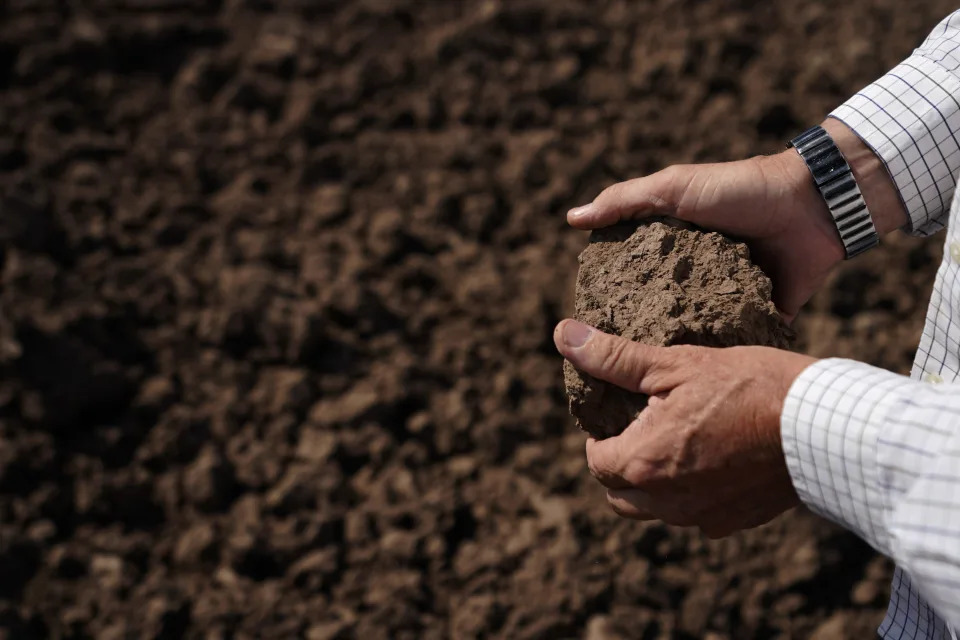 Farmer Larry Cox looks at soil on a field at his farm Monday, Aug. 15, 2022, near Brawley, Calif. The Cox family has been farming in California’s Imperial Valley for generations. (AP Photo/Gregory Bull)
Farmer Larry Cox looks at soil on a field at his farm Monday, Aug. 15, 2022, near Brawley, Calif. The Cox family has been farming in California’s Imperial Valley for generations. (AP Photo/Gregory Bull) Farmer Larry Cox walks stands in a field of Bermudagrass at his farm Monday, Aug. 15, 2022, near Brawley, Calif. The Cox family has been farming in California’s Imperial Valley for generations. (AP Photo/Gregory Bull)
Farmer Larry Cox walks stands in a field of Bermudagrass at his farm Monday, Aug. 15, 2022, near Brawley, Calif. The Cox family has been farming in California’s Imperial Valley for generations. (AP Photo/Gregory Bull)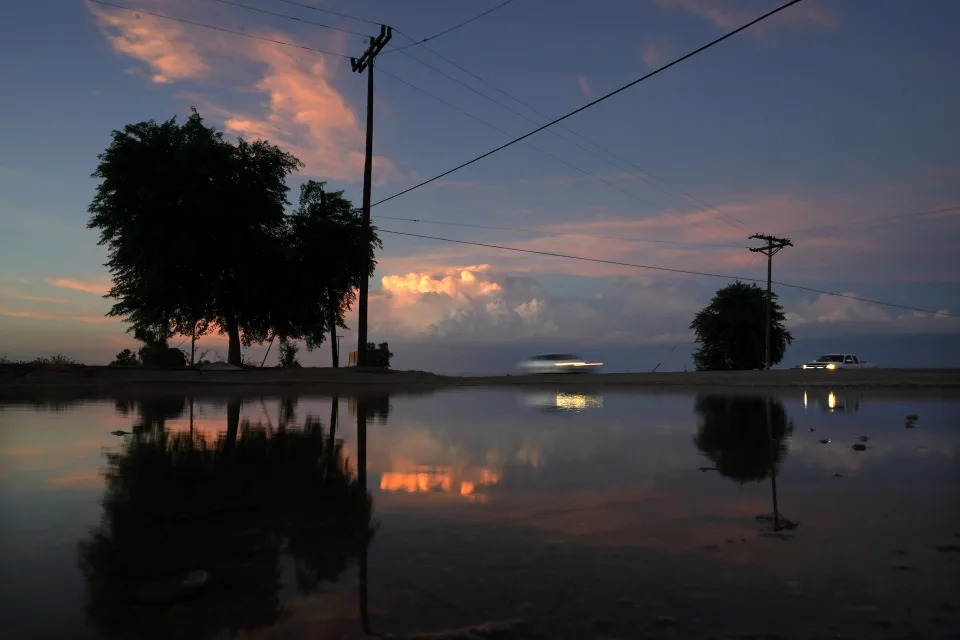 Colorado River Compact California. A small pond sits between a field irrigated with water from the All-American Canal and a highway, Sunday, Aug. 14, 2022, near Brawley, Calif. The canal conveys water from the Colorado River into the Imperial Valley. (AP Photo/Gregory Bull)
Colorado River Compact California. A small pond sits between a field irrigated with water from the All-American Canal and a highway, Sunday, Aug. 14, 2022, near Brawley, Calif. The canal conveys water from the Colorado River into the Imperial Valley. (AP Photo/Gregory Bull) Farmer Larry Cox walks to his truck as his dog, Brodie, soaks in a water canal at his farm Monday, Aug. 15, 2022, near Brawley, Calif. The Cox family has been farming in California’s Imperial Valley for generations. (AP Photo/Gregory Bull)
Farmer Larry Cox walks to his truck as his dog, Brodie, soaks in a water canal at his farm Monday, Aug. 15, 2022, near Brawley, Calif. The Cox family has been farming in California’s Imperial Valley for generations. (AP Photo/Gregory Bull) A worker diverts water as a sprinkler system is installed for alfalfa at the Cox family farm Monday, Aug. 15, 2022, near Brawley, Calif. The Cox family has been farming in California’s Imperial Valley for generations. (AP Photo/Gregory Bull)
A worker diverts water as a sprinkler system is installed for alfalfa at the Cox family farm Monday, Aug. 15, 2022, near Brawley, Calif. The Cox family has been farming in California’s Imperial Valley for generations. (AP Photo/Gregory Bull) Water from the All-American Canal flows in a canal alongside fields Saturday, Aug. 13, 2022, near El Centro, Calif. The canal conveys water from the Colorado River into the Imperial Valley. (AP Photo/Gregory Bull)
Water from the All-American Canal flows in a canal alongside fields Saturday, Aug. 13, 2022, near El Centro, Calif. The canal conveys water from the Colorado River into the Imperial Valley. (AP Photo/Gregory Bull)
